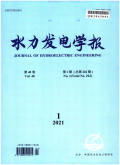水力发电学报2024,Vol.43Issue(10):42-52,11.DOI:10.11660/slfdxb.20241004
基于深度学习的河道非恒定流糙率反演方法
Roughness inversion method for river unsteady flow simulations based on deep learning
摘要
Abstract
Manning's roughness coefficient,as a comprehensive indicator of flow resistance,significantly affects the accuracy of one-dimensional unsteady flow simulations.Previous studies based on roughness inversion lack consideration of the roughness that varies with the discharge or water level.This paper develops a roughness inversion method for river unsteady flow simulations based on the long short-term memory neural network,through treating roughness as a continuous piecewise linear function of discharge,so as to realize the direct inversion of roughness using a data-driven method.We also develop a successive approximation based on a stepwise inversion strategy to reduce the dimension of inversion solutions,a useful technique for long natural rivers that feature a great number of cross sections and a large discharge variation range.This inversion method is evaluated through a case study of the reaches of the Xiangjiaba Reservoir,China.The results show that by using the roughness values inverted from the observed data under different discharge grades,its calculations of the water stage hydrographs are in good agreement with measurements,and its accuracy is significantly higher than the methods without considering roughness variations with discharge.The results verify the effectiveness of our new method that provides a novel approach to the roughness inversion of flows in long rivers.关键词
长短期记忆神经网络/分步反演策略/天然河道/糙率反演/一维非恒定流Key words
long short-term memory neural network/stepwise inversion strategy/natural river/roughness inversion/one-dimensional unsteady flow分类
水利科学引用本文复制引用
李成业,彭杨,罗诗琦,于显亮,姚礼双..基于深度学习的河道非恒定流糙率反演方法[J].水力发电学报,2024,43(10):42-52,11.基金项目
国家重点研发计划资助项目(2023YFC3209501) (2023YFC3209501)

